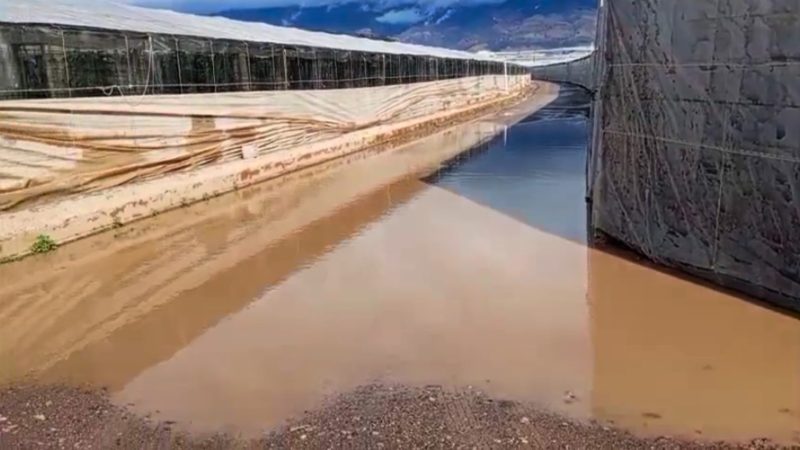Forecasts for the melon and watermelon season in Almería indicate an uncertain scenario. At the end of January, Asaja Almería predicted stability in watermelon acreage and a 25% increase in melon cultivation. However, COAG Almería presents a different outlook. According to Andrés Góngora, provincial secretary of COAG Almería and national head of Fruits and Vegetables at COAG, watermelon acreage could surpass ‘10,000 hectares for the first time in Almería’s history.’ This increase is largely due to crises in other crops, such as peppers, which have been impacted by the Parvispinus pest. ‘Many farmers have opted to prematurely remove their winter crops and switch to watermelon in spring to regain profitability,’ explains Góngora.
Despite this expansion in cultivated area, COAG remains skeptical that it will translate into increased production due to adverse weather conditions. The intense rains in March, coinciding with the crucial pollination and crop development phases, have significantly impacted the season. Although it initially seemed promising in terms of acreage, it now faces ‘serious difficulties.’
‘A real disaster is unfolding in some farms that already have beehives in place, but pollination under these current climatic conditions is virtually impossible,’ Góngora stated in early March.
Delays and harvest losses
The critical pollination period coincided with high humidity, temperature drops, and abrupt climatic changes. ‘The initial fruit set before the storms was not too bad, but the rain has affected fruit enlargement and plant development.’ The situation is especially severe for farms sown in mid-to-late January, with pollination occurring in March. In these cases, humidity has hindered beehive activity, directly impacting fruit formation. ‘Some greenhouses will lose half their harvest. Some crops are beyond saving, while others might still develop, but with reduced volumes.’
In open-field farms such as those in Pulpí, the situation is ‘critical’ and will require mass replanting due to cold temperatures and diseases like botrytis, which have affected grafts.
As a result, the season is expected to be delayed by at least a week, pushing the first harvests to the third or fourth week of April. ‘April will be a weak month this year.’
An increasingly competitive market
Watermelon is also facing growing competition in international markets. ‘There used to be an unwritten rule: early harvests were always profitable. Whoever harvested first, sold well. Now, we are no longer alone in the market, and early watermelon growers are losing their competitive edge.’
RELATED NEWS: The heavy rains (DANA) will not stop the Spanish citrus season
Additionally, production costs remain a structural problem. ‘They have increased, and selling prices are so unstable that some years you end up eating your own produce because there’s nowhere to sell it.’
Measures to address the climate crisis
In response to this scenario, COAG Almería has called for the implementation of more phytosanitary tools to help farmers cope with extreme weather events. ‘These would be exceptional measures that could be activated when needed and would provide significant relief for farmers.’


















